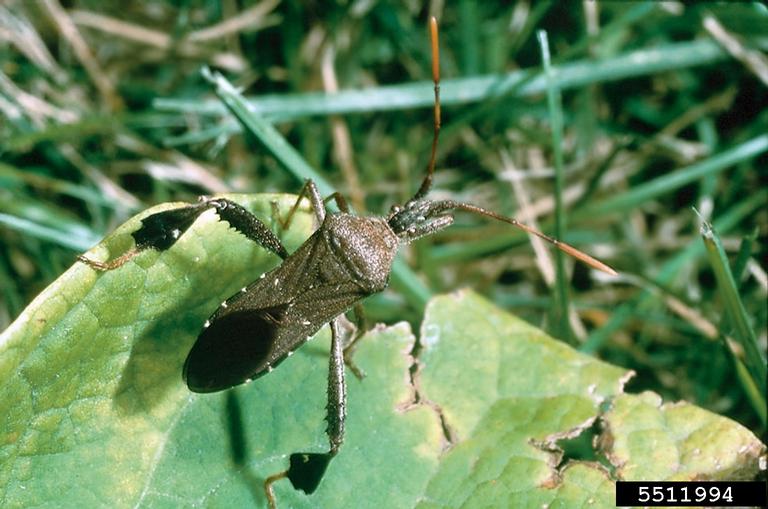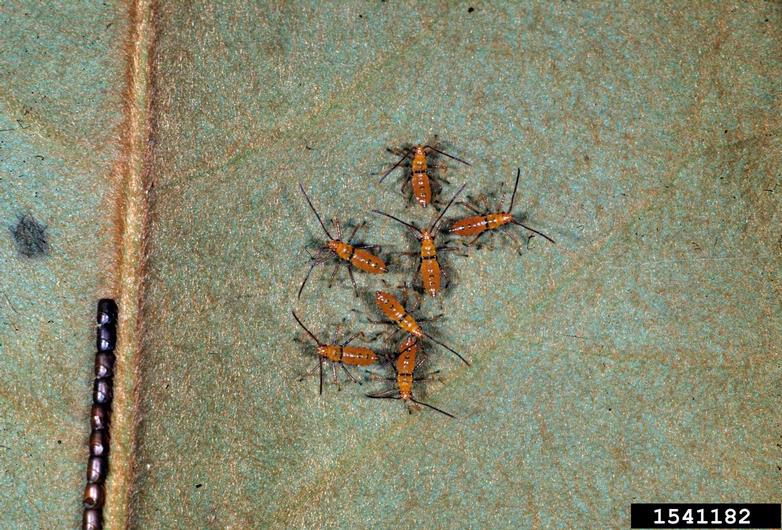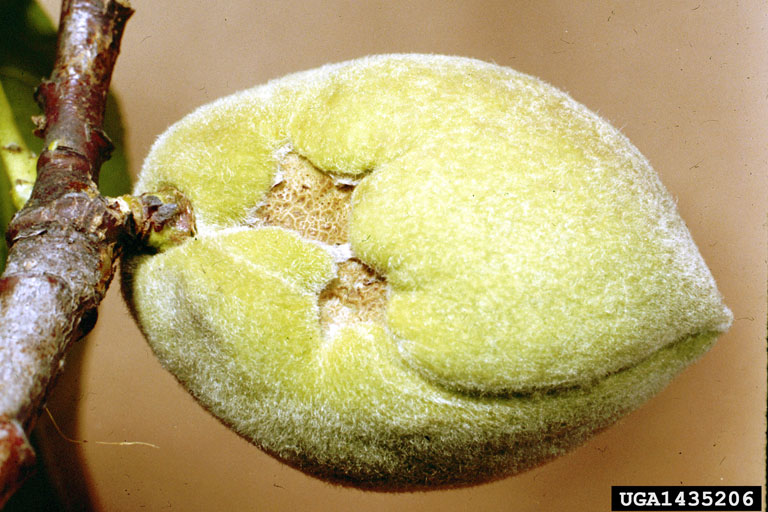 Leaf-Footed Plant Bugs - August 6, 2014 Jeff Schalau, Agent, Agriculture & Natural Resources University of Arizona Cooperative Extension, Yavapai County Deciduous fruit trees are producing apples, pears, peaches, plums, and apricots in many areas of Yavapai County this year. When late spring freezes do not cause fruit crop failures, then we must manage the insects that come looking for a meal. These include thrips in April and May, leaf feeding insects such as masked chafers, blister beetles, and grasshoppers, and then, fruit feeding insects such as fig beetles, codling moths, and leaf-footed plant bugs. This column will focus on leaf-footed plant bugs. The leaf-footed bug belongs to the order Hemiptera which are commonly called "true bugs". This order of insects is distinguished by their front wings that are thickened at the base and membranous at the tip. The hind wings are completely membranous and shorter than the front. On most true bugs, the front wings overlap and create a triangle (called a scutellum) or "x" pattern on the back of the insect. True bugs also have piercing/sucking mouthparts: some eat plants while others are predators. The Hualapai tiger (also known as the conenose bug and kissing bug) is another Hemipteran that feeds on blood of small rodents and sometimes humans. Adult leaf-footed bugs are so named because of the flattened tibia on the rear legs (the tibia is the leg section between the foot and the section that is attached to the body). The adult body can be a greenish gray to black, about ¾" inch-long, with upwardly pointed structures on what we would think of as the shoulders. They are hard bodied which makes them somewhat difficult to control. Juveniles (nymphs) are smaller and often mostly black with a red spot on their back. The leaf-footed bug often attacks ripening fruit crops and causes discolored depressions or blemishes called cat-faces. You may have noticed these wounds on your peaches or nectarines. These scars can cause undersized fruit or premature drop. On recent attacks you may notice clear sap to oozing out of the wounded areas on the fruit. These are the locations of the puncture wounds made by their long, piercing mouthparts. Photos of adult and juvenile leaf-footed bugs, their egg masses, cat-faces they cause, and additional information are included below. Leaf-footed bugs also attack pecan nuts causing black pit in the kernels. When fruit crops are not available, they can be found eating the flowers and fruit of crepe myrtle, privet, and roses. Detecting and diagnosing these pests can be difficult because often they are not seen on the fruit or nut tree. They may be on a neighboring plant resting during the day, then travel to feed on the fruit or nut tree at night or in the early morning. To correctly diagnose this pest, look for the crop damage, and then search for the insect on the host plant or adjacent trees and shrubs. Management strategies include minimizing access to overwintering sites, weed removal, physical barriers (such as row cover), hand removal (or using a shop-vac), and encouraging natural enemies. Overwintering sites include woodpiles, under bark of trees, and in outbuildings. Remove these overwintering sites where possible or inspect them for overwintering leaf-footed bugs. Weedy areas serve as a food source for leaffooted bugs during winter and spring, when fruits are not available. Try to eliminate such areas near your garden or keep weedy areas closely mowed. Insecticides are rarely needed for leaf-footed bug control because small blemishes on home-grown fruit can usually be tolerated and landscape plants are rarely damaged. In addition, most insecticides available to homeowners only have temporary effects on the leaf-footed bug. In severe cases, insecticide applications may be considered as a last resort. Here, insecticides will be most effective against small nymphs. Gardeners should monitor infested plants for egg masses and try to make insecticide applications when small nymphs are present. The most effective insecticides against leaf-footed bug are broad-spectrum, pyrethroid-based insecticides, such as permethrin. However, these products are quite toxic to bees and beneficial insects. Insecticidal soap or botanicals, such as neem oil or pyrethrin, may provide some control of young nymphs only. If insecticides are used close to harvest, make sure to observe the days-to-harvest period indicated on the insecticide label; and wash the fruit before consuming. Follow the Backyard Gardener on Twitter – use the link on the BYG website. If you have other gardening questions, call the Master Gardener help line in the Camp Verde office at 928-554-8999 Ext. 3 or e-mail us at verdevalleymg@gmail.com and be sure to include your name, address and phone number. Find past Backyard Gardener columns or provide feedback at the Backyard Gardener web site: http://cals.arizona.edu/yavapai/anr/hort/byg/. Additional Resources Leaf-footed Bug, Pest in Gardens and Landscapes Series, University of California IPM Online, www.ipm.ucdavis.edu/PMG/PESTNOTES/pn74168.html  Adult leaf-footed plant bug (Leptoglossus oppositus), from Kansas Department of Agriculture Archive, Bugwood.org.
Adult leaf-footed plant bug (Leptoglossus oppositus), from Kansas Department of Agriculture Archive, Bugwood.org. Juvenile leaf-footed plant bugs with egg masses visible on left (Leptoglossus fulvicornis), from Lacy L. Hyche, Auburn University, Bugwood.org.
Juvenile leaf-footed plant bugs with egg masses visible on left (Leptoglossus fulvicornis), from Lacy L. Hyche, Auburn University, Bugwood.org. Cat-facing caused by leaf-footed plant bug on a peach, from Clemson University - USDA Cooperative Extension Slide Series, Bugwood.org.
Cat-facing caused by leaf-footed plant bug on a peach, from Clemson University - USDA Cooperative Extension Slide Series, Bugwood.org.
|